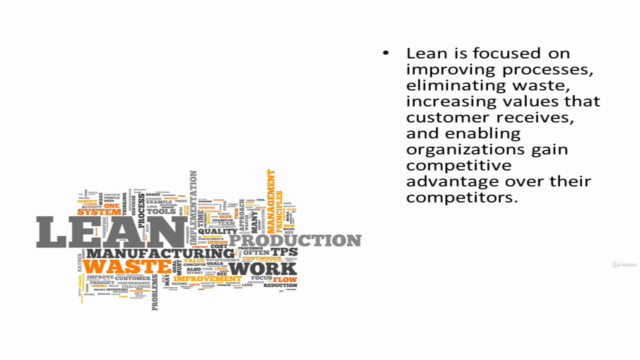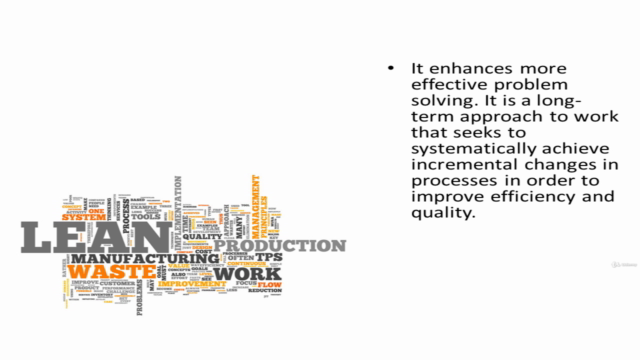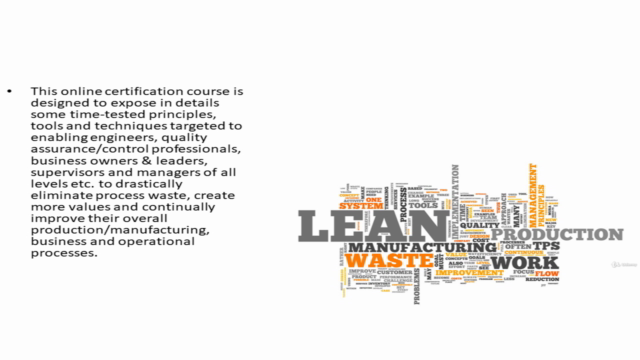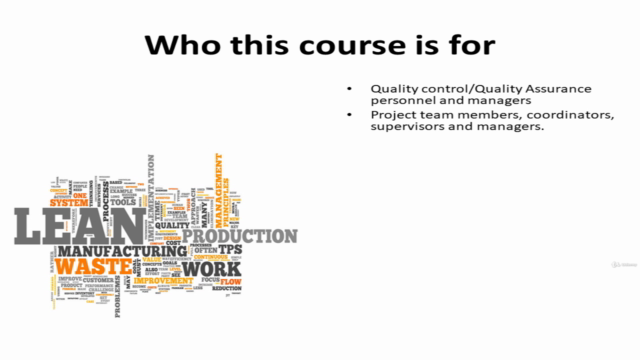Lean Manufacturing

Why take this course?
It seems you've provided a comprehensive overview of various Lean manufacturing principles and techniques, including benchmarking, cellular manufacturing, Failure Mode and Effects Analysis (FMEA), Gemba Walk, One Piece Flow, and mistake proofing. Let's delve into each of these topics to understand them better:
Benchmarking
Benchmarking is the process of comparing your products, services, and processes against industry bests or relevant benchmarks to assess performance and identify areas for improvement. It involves learning about the processes and practices that other companies have successfully implemented to improve efficiency, quality, and productivity. There are several types of benchmarking:
- Internal Benchmarking: Comparing different functions within the same company.
- External Benchmarking: Comparing with external organizations outside the company.
- Best Practices Benchmarking: Identifying best practices regardless of whether they are internal or external to the company.
- Competitive Benchmarking: Looking at direct competitors to assess your competitive position.
- Functional Benchmarking: Comparing functional areas such as customer service, IT, etc., with industry standards or leaders.
Cellular Manufacturing
Cellular manufacturing arranges machines and workstations in a way that products flow through the production process in the most efficient order. This approach can reduce waste, improve efficiency, and increase the flow of materials and information. The design of a cell should consider the following:
- Workflow: The sequence of operations for a product family.
- Material Handling: Minimizing movement and optimizing flow.
- Skill Mix: Matching worker skills with specific tasks within the cell.
- Cross-Training: Enabling workers to perform multiple functions within the cell.
Failure Mode and Effects Analysis (FMEA)
FMEA is a systematic approach for evaluating a process to assess the potential failure modes, determine their effects, assess the risk associated with each failure mode, identify current controls that address each identified failure mode, prioritize issues for improvement based upon the assessment, and develop and implement actions to prioritized issues. FMEA involves:
- Identifying Failure Modes: Understanding how a product or process can fail.
- Assessing Effects: Determining the consequences of each failure mode.
- Evaluating Severity, Occurrence, and Detection: Assessing the seriousness of the potential failure, its likelihood of occurring, and the ability to detect it before it reaches the customer.
Gemba Walk
A Gemba Walk is a management practice where leaders observe and engage with employees directly at the workplace to understand what is happening from their perspective. It helps in:
- Observing and Understanding: What work is being done, how it's being done, and why certain processes are in place.
- Engaging and Communicating: With workers to provide immediate feedback and support.
- Problem Solving: Identifying issues that are not immediately apparent from the office or conference room.
One Piece Flow (1PF)
One Piece Flow is a lean methodology focused on processing customer orders one at a time, minimizing inventory and lead times, and maximizing responsiveness to customer demands. It helps in achieving a smooth flow of production with minimal delays or bottlenecks.
Mistake Proofing (Poka-Yoke)
Mistake proofing is the process of creating systems that prevent errors before they occur. It involves:
- Error Identification: Understanding where mistakes are likely to happen.
- Error Prevention: Implementing controls or designs that make it difficult, if not impossible, to make an error in the first place.
- Continuous Improvement: Regularly reviewing and updating mistake-proofing measures to improve their effectiveness.
By understanding and implementing these Lean principles and techniques, organizations can significantly improve their operations, reduce waste, and enhance customer satisfaction. Each of these tools plays a critical role in creating a lean culture that focuses on continuous improvement and delivering value to the customer.
Course Gallery




Loading charts...